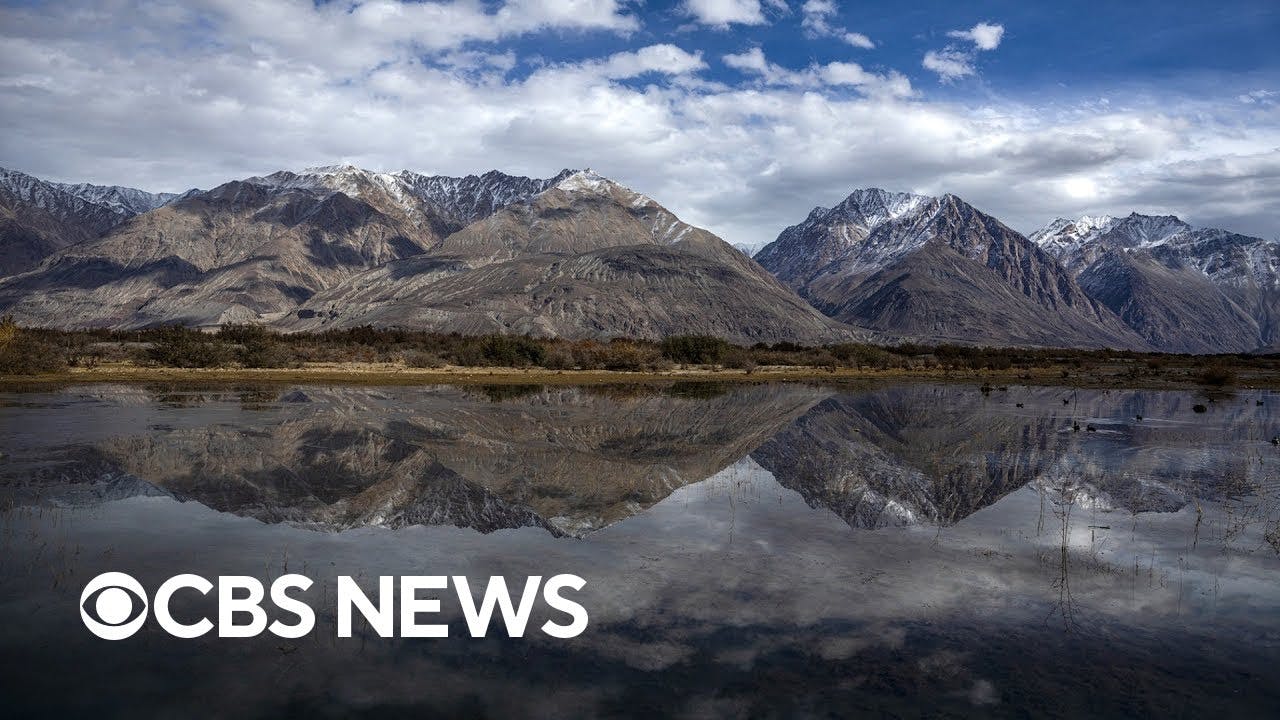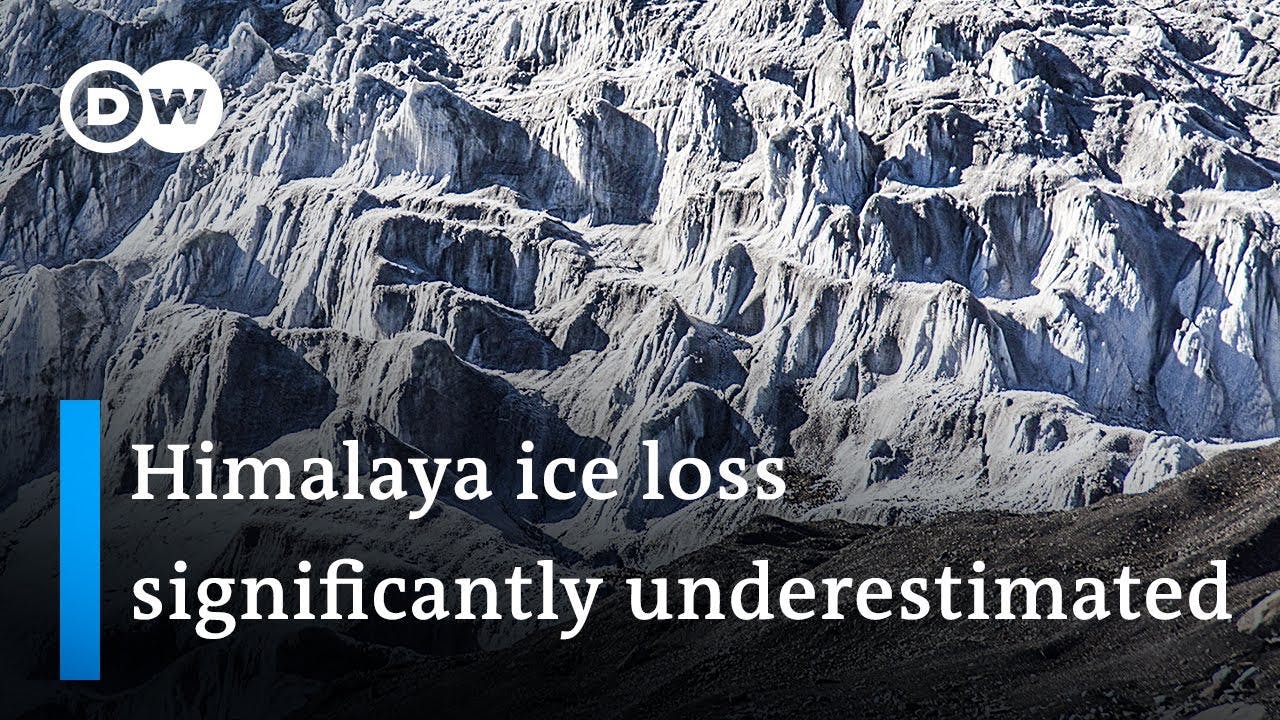What Will Happen if the Himalayan Glacier Melts or Breaks?
What is the Himalayan Glacier, why is it important, and what kind of negative consequences would there be for society if the Himalayan Glacier is to break or melt?
Ecology News
2023-06-30T00:00:00.000Z
2023-08-24T00:00:00.000Z
en-us
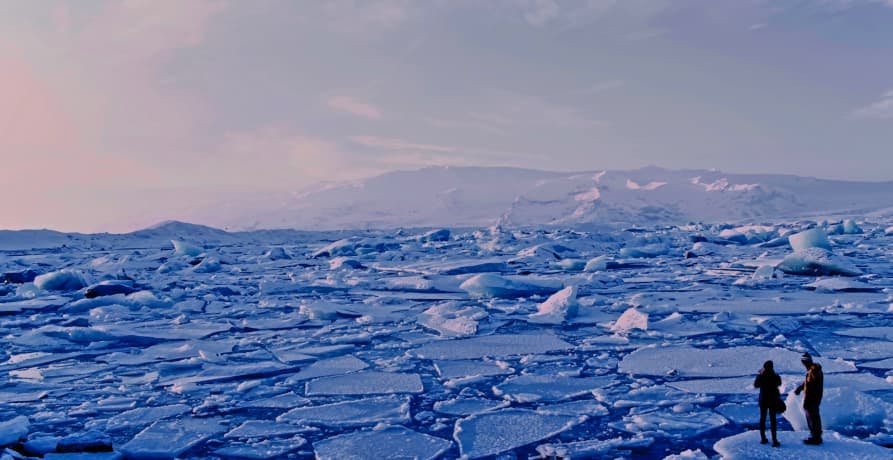
By
Stephanie Safdie,updated Aug 24, 2023
In the midst of climate change, almost everyone knows that one of the biggest threats to the human species is the growing limited supply of water – and if something like the Himalayan Glacier melts or breaks, it could provoke us to be even more mindful of our water consumption than many of us already are.
What is the Himalayan Glacier, why is it important, and what kind of negative consequences would there be for society if the Himalayan Glacier is to break or melt?
In this article, we’ll discuss the importance of the Himalayan Glacier and why so many people are keeping a close eye on it.
What are the Himalayan glaciers?
The Himalayan glaciers, more commonly known as the Hindu Kush Himalaya – are a range of glaciers in the Himalayan mountain range that span over 2,000 miles (or around 3,500 kilometers) across countries like India, Nepal, Pakistan, China, and Bangladesh. Currently, the Himalayan glaciers are being threatened by global warming – with temperatures rising to the extent that the glaciers across the Himalayan mountain range could lose anywhere between 30% to 50% of their water before the end of the century.
The Himalayan glaciers serve as a vital part for many of the ecosystems in some of the Asian countries listed above: including Afghanistan, Bhutan, and Myanmar – as the Himalayan glaciers help to sustain major rivers in Southern Asia. Some of the rivers dependent on the Himalayan Glacier include the Indus River in Pakistan, the Ganges River in India, and the Brahmaputra River in Tibet.
In addition to providing freshwater and other pivotal resources to those living in Asia off of a current supported by a Himalayan Glacier, this mountain range also attracts over 700,000 tourists each year – with many of them being trekkers looking to climb one of the mountains in the Himalayan glaciers.
The best example of tourism in the Himalayan region is Mount Everest, where around 800 people try to climb the infamous mountain every year.
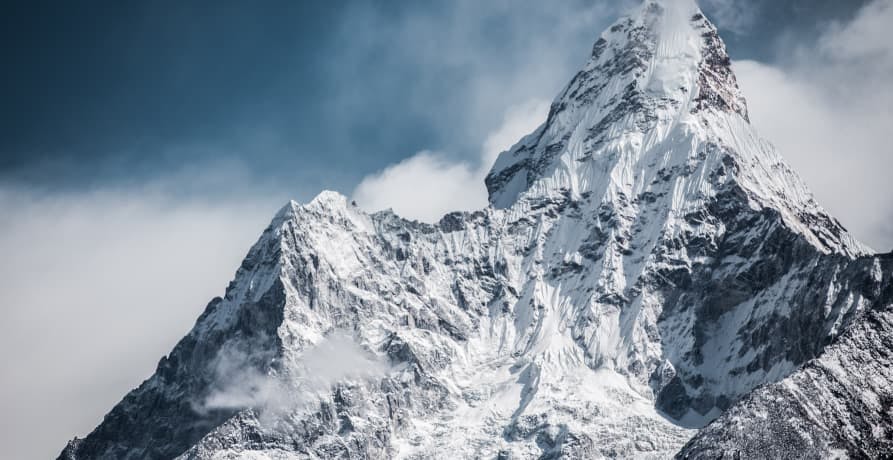
The Himalayan glaciers are known for their grandiose size, topography, and eye-dropping natural beauty. Some of the most well-known glaciers in the Himalayan Glacier mountain range include the Gangotri Glacier, the Khumbu Glacier, the Siachen Glacier, and the Baltoro Glacier.
👉 Did you know? The Himalayan glaciers are nicknamed as the “Third Pole” of the world for how much ice is present across the Himalayan glaciers.
Why are the Himalayan glaciers important?
The Hindu Kush Himalayan region, or the area where the Himalayan Glacier resides, serves as a base point for multiple of Asia’s rivers – all of which are responsible for providing nearly 2 billion people with drinking water and irrigation systems used for farming. In short, billions of people on the planet depend on the Himalayan Glacier for survival.
Although recent studies reveal that the Himalayan Glacier isn’t likely to dissipate at lower levels of elevation for the next several decades, other issues like groundwater depletion and growing demand on behalf of humans could make up for the parts of the Himalayan Glacier to be preserved at those lower elevation levels.
This is because higher elevations of the Himalayan Glacier will be more prone to melting and breaking due to the increased intensity of natural disasters and shift in weather patterns caused by climate change: both of which could have an impact on snow and rainfall, ultimately impacting the available supply of water.
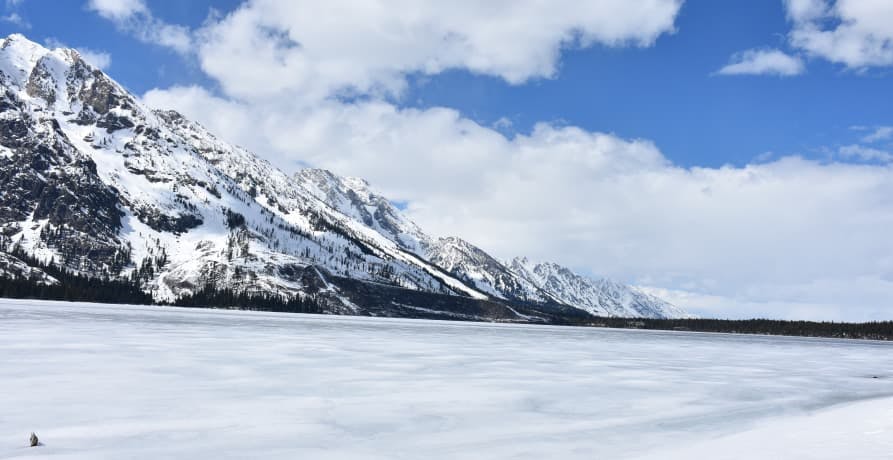
However, the Himalayan Glacier is most important as it not only provides freshwater for drinking and irrigation systems across Asia – but also provides water to create hydropower for millions of people living nearby the Himalayan Glacier mountain region. In addition to this, the Himalayan glaciers also play a part in regulating the regional climate: as they influence monsoon pattern and help to ensure there is an ecological balance in surrounding areas.
If climate change is to take the Himalayan glaciers under with them, it could prove extremely problematic for multiple countries in Asia.
What would happen if the Himalayan Glacier breaks or melts?
If greenhouse gas emissions continue to be produced at the rate that they are, the Himalayan glaciers could lose up to 80% of their ice by 2100. This would be extremely detrimental, as the Himalayan Glacier serves as the largest source of freshwater outside of polar regions, and vital for the 2 billion people who live downstream of the Himalayan mountains.
Asia is the most populous continent on planet Earth, with almost 60% of the world’s population residing in Asia at over 4.5 billion people – proving how losing the Himalayan Glaciers, even at a slow rate, would prove catastrophic for much of the world.
👉 As the population of Asia continues to grow, the Himalayan Glacier is likely to continue melting as more human activity will have an influence on the rate of the Himalayan Glacier to melt faster as supply will struggle to meet the growing water demands of the continent.
If the Himalayan Glacier range is to melt, it won’t just be a problem in terms of resources – but a Himalayan Glacier breaking could even cause damage to the infrastructure in surrounding areas. This would be similar to the damage caused by natural disasters like the flooding from a hurricane. Those living in mountain communities are growing more prone to the risk of enduring extreme weather such as flooding, landslides, and even avalanches.
Many also forget how climate change is affecting our ecosystems, and a Himalayan Glacier melting or breaking wouldn’t fear away from affecting this facet of nature either – with multiple species being threatened by the shifting temperatures in the Himalayan Glacier region.
One thing is for sure: there isn’t anything good to come out of a Himalayan Glacier melting or breaking.
How could we prevent the Himalayan Glacier from breaking or melting?
On the flip side, some may not view the Himalayan Glacier melting as a pivotal problem – seeing as the melted water from the Himalayan Glacier range could help to protect people against the other impacts of climate change – such as incessant droughts that central Asia has seen. However, this benefit would only be a temporary band aid: and the long-term effects of a melted Himalayan Glacier wouldn’t fall far behind.
It’s clear that more needs to be done to prevent the Himalayan glaciers from melting, and there are a lot of things that can be done to prevent a catastrophic event. For instance, more nations need to keep up with their commitments to prevent losing the glaciers. Increased international cooperation, development of environmental policies, and stricter measures are necessary to prevent the Himalayan glaciers from running completely dry. This is one of the most imperative keys to ensuring the best knowledge and strategies are shared to create a collective effort to protect the Himalayan glaciers.
A huge part of the problem with the current measures being taken to protect the Himalayan glaciers is that many countries are not prepared in line with current scientific analysis, or don’t have the resources to financially prepare for the potential melting or breaking of the Himalayan Glacier. While it is crucial to constantly monitor the Himalayan glaciers, it is ultimately impossible to do so without the necessary financial resources.
Continuously monitoring the Himalayan glaciers is crucial for understanding the rate at which they are melting due to increased human activity, but much of the tactics to mitigate that melting will require financial resources – many of which countries that depend on the freshwater resources providing by the Himalayan glaciers these countries don’t have.
Other efforts to protect the Himalayan Glacier could include the following:
- Reforestation: As forests play a part in ensuring that the surrounding climate is maintained, making an effort to conserve forests or even replant trees could help to ensure there is a balanced climate throughout the Himalayan region and ultimately prevent glaciers from melting.
- Improved Water Management: Aiming for a better rationing method to divide the current water sources between the countries could help to preserve the current water supply from the Himalayan glaciers while other prevention measures are being developed and employed.
- Sustainable Land Efforts & Conservation: Striving for better management of land can help to prevent erosion, sedimentation, and more deforestation – all of which can help to control the water pollution in waters dependent on the Himalayan glaciers.
👉 Countries actions could take into account how slowly the Himalayan glaciers are melting to implement reasonable action plans, so while the scientific prognosis is currently grim – human activity has a chance to alter the rate of the Himalayan glaciers melting or breaking. In other words, countries don’t have to bite off more than they can chew, and even small measures to protect the Himalayan glaciers could help. However, these countries should still proceed with caution – as climate change has progressed too far to prevent the Himalayan glaciers from breaking or melting at all.
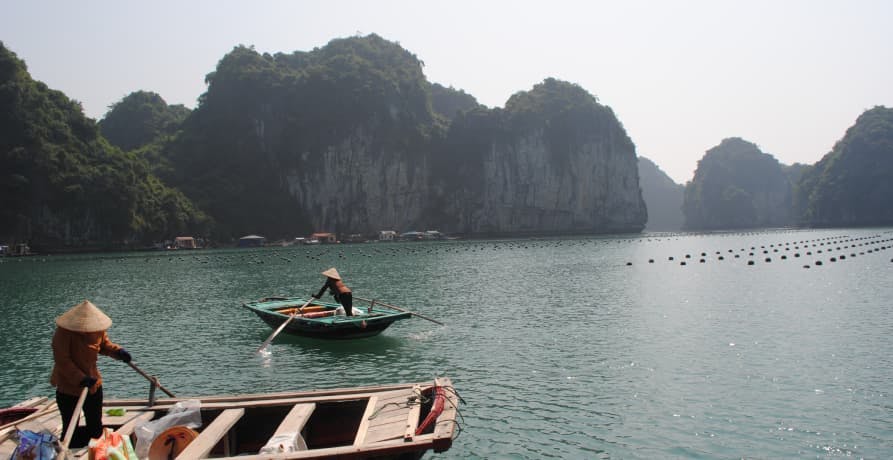
What actions would need to be taken if a Himalayan Glacier does break or melt?
It’s always better to be proactive than reactive when it comes to circumstances created by climate change like a Himalayan glacier melting or breaking – but in the worst case scenarios, it’s better to get used to the consequences now.
On the plus side, practicing these worst case scenario outcomes will also help to lessen the current pressure on the Himalayan glaciers from melting!
Here are a few things that would happen if a Himalayan Glacier does break or melt:
- Insurance companies in Asia may suffer as a result of infrastructure or residential damage
- People in Asia will need to create stricter measures to reduce water usage: read more here to learn some of our best tips to cut back on water consumption.
- The agriculture industry in Asia could really suffer – especially the production of rice, as this grain is pivotal in many diets in Asian countries.
- The lack of water to be used for hydroelectric power could set some countries back on the climate or emission reduction goals, which is imperative seeing as China and India (both Asian countries) are some of the worst polluters in the world.
- Countries will be forced to implement stringent environmental regulations as water sources will be greatly compromised and could cause political uproar.
All in all, it’s better to take action now to prevent future generations from struggling with the aftermath of a melted Himalayan Glacier – and while the glaciers in the Himalayas are already on their way to melting, it isn’t too late to change course.
What about Greenly?
If reading this article about what will happen if the Himalayan Glacier melts or breaks has made you interested in reducing your carbon emissions to further fight against climate change – Greenly can help you!
It can be hard to keep track of all of the news happening around the world, such as what the negative consequences would be if the Himalayan Glacier is to melt or break – but don’t worry, Greenly is here to keep you up to date on all of the latest climate news.
Greenly can help you make an environmental change for the better, starting with a carbon footprint assessment to know how much carbon emissions your company produces.


